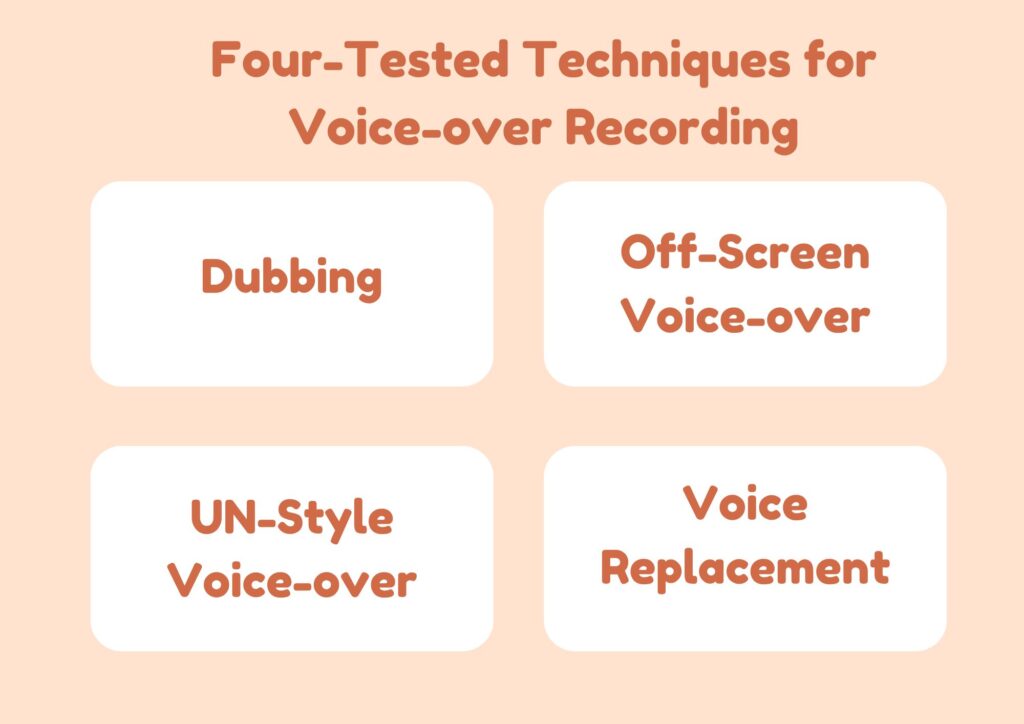In today’s world, the Internet serves as the principal channel for information dissemination. Due to the widespread distribution of videos, commercials, and films, content is no longer constrained by geographic boundaries. The free flow of content does, however, come with the requirement to make sure that your content still actually appeals to the target audience.
With the increasing need to reach your target audience through localization, it is critical to be familiar with the various options available to you in order to take your content and have it well-received by your target audiences.
You can adapt your material in a number of ways so that people who speak different languages can understand it. You can choose the type that best fits your brand by learning about the various ways you can change your videos globally and when to apply accents.
We’ve provided four tested techniques for voice-over recording to help you disseminate your video content effectively:

Dubbing
Dubbing also referred to as language replacement, is the most widely used technique for translating videos or motion picture films.
Professional voice actors record the dialogue while taking into account the actors’ lip movements and choosing the most appropriate words to make sure the translated version fully syncs with the original audio track.
The best approach to fully understand an original video’s message is by dubbing, especially for informational or instructive videos that contain a lot of substance with a high emotional impact.
Off-ScreenVoice-over
Off-screen voice-over, commonly referred to as off-screen narration, is one of the most widely utilized voice-over techniques because it doesn’t require synchronization to an on-screen speaker.
Cost and difficulty are lower with this technique because there typically is only one narrator required and that narrator does not have to time his or her speech to the other speakers.
When employing this technique, it’s crucial to ensure that the timings of the translation match those of the original version’s titles, animations, tone, emotions, and voice-over style to effectively and clearly deliver the message.
UN-Style Voice-over
UN-Style Voice-over is frequently utilized in formal media, news reports, and interviews. This voice-over is ideal for maintaining the original speaker’s voice and conveying the correct information to viewers worldwide.
In UN-style, the original speaker’s volume is lowered and a voice-over performer is added on top. To create a satisfying viewing experience, you must match the voice of your artist with the voice of the original speaker.
UN-style also helps a business save money on labor and recording expenses because it only needs one male and one female voice for all male and female speakers, respectively.
Voice Replacement
Voice replacement, as the name suggests, is the process of substituting the translated voice for the original. The original speech from the video is muted during this process, and a voice in the target language takes its place.
The voice talent must put forth more effort to match the voices with the original language, which raises the level of difficulty. Ultimately, there won’t be a complete lip-sync, but there will be a close match in the sound. You would need one talent for each speaker in the video if you chose this option.
It’s crucial to think about the voice recording method that will perform best for your video material. Be sure to find a Professional Voice-over that is able to guide you through the process of casting, direction, localization/translation and quality assurance.



